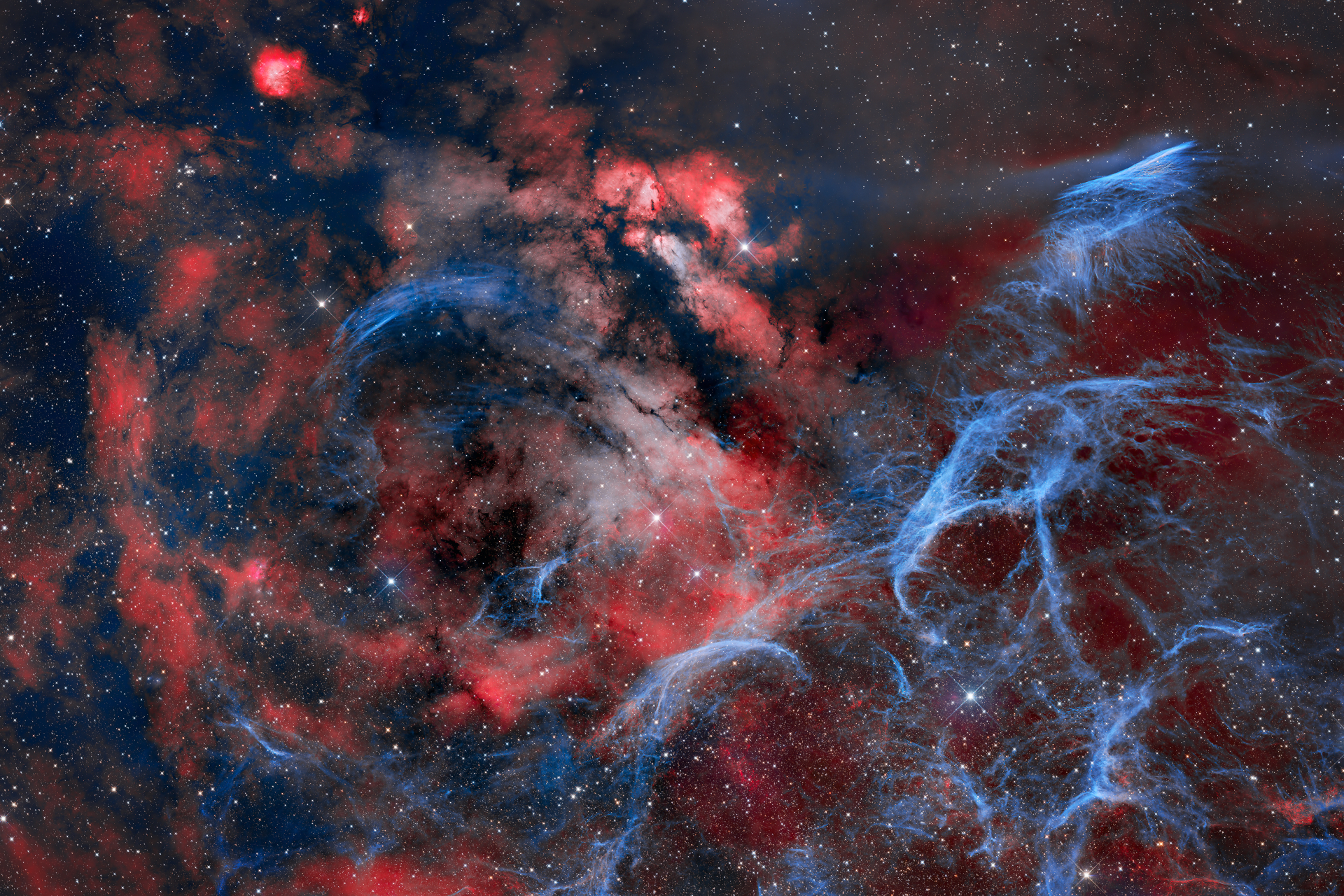This stunning panoramic photo taken by astrophotographer Vikas Chander shows the remnants after the explosive death of a massive star. This region is called the Vela supernova remnant.
The dramatic course of events occurred about 11 thousand years ago, when a star in the constellation Vela became a supernova. According to NASA, during the violent event, it shone 250 times brighter than Venus and was so bright that it could be seen in broad daylight. Although today this star has long been gone, its remnants are visible in the Southern Hemisphere.

The constellation Vela is visible in the Southern Hemisphere. It is named after the sails of the Argo Navis, the ship on which Jason and the Argonauts went in search of the Golden Fleece. The Vela used to be part of a larger constellation called Argo Navis, but in the 1750s French astronomer Nicolas Louis de Lacaille divided them into three separate constellations: Vela (the sails), Carina (the keel) and Puppis (the stern).
The constellation Vela is interesting to observe because it contains a number of intriguing stars and objects of the far sky, including the Southern Ring Nebula (NGC 3132), the Gum Nebula, the IC 2391 cluster, the Pencil Nebula NGC 2736, not to mention the supernova remnant.
The astrophotographer obtained a photo from the Deep Sky Observatory in Chile using the Takahashi E160ed telescope and a professional Zwo 6200mm camera. To take a panoramic photo, Chander combined two separate photos together.
“While the Pencil Nebula is oxygen-rich and the RCW nebulas are hydrogen-rich, I decided to image in the classical LRGB mode while also taking enough data on the oxygen and hydrogen filters to bring out the fine details,” Chander explained the color saturation in the photo.
Earlier we reported on how astronomers solved the mystery of the birth of giant stars.
According to Space.
Follow us on Twitter to get the most interesting space news in time
https://twitter.com/ust_magazine

